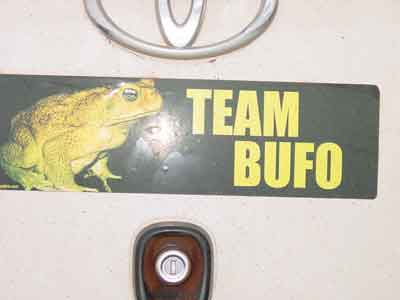TEAM BUFO - the first generation
Bringing together a group of talented, energetic, dedicated research scientists and university students willing to accept the challenge of working in a remote area, the formation of TEAM BUFO generated an enormous increase in our understanding of cane toads and their impacts on biodiversity.
Rick named the group "TEAM BUFO" because at the time, the scientific name of the cane toad was Bufo marinus. Now the species name has been changed to Rhinella marina, but we haven't changed the name of the group.
Rick Shine
Rick is a Professor of Biology at Macquarie University, in Sydney. He was employed for most of his career at the University of Sydney, and was able to devote his time to research (with a lot less undergrad teaching and administration) through Fellowships from the Australian Research Council. The first of those was a Federation Fellowship (2006 to 2010, so covering the first five years after cane toads arrived at our main study site near Darwin). Rick was then awarded a Laureate Fellowship, again from the ARC, to run until 2018. After that finished, he left Sydney University and transferred to nearby Macquarie University.
With the backing from those ARC Fellowships, Rick created TEAM BUFO in 2005, and he still heads the group.
Rick has been passionate about wildlife, especially reptiles and amphibians, since he was a small child in Brisbane. He turned that passion into a career, doing an undergraduate degree in science at the Australian National University (in Canberra), then a Ph.D at the University of New England (in Armidale). Then, after a few years’ postdoctoral work in the USA (where he met Terri), they both returned to Sydney in 1978.
Rick has conducted research all over the world, mostly on the ecology of snakes. He’s published more than 1000 papers, and received many national and international awards for his research. For example, he's the only scientist who has received three Eureka Awards, for three different fields (research, mentoring, and communicating science to the public). In 2016 he received the two top awards in Australian science: NSW Scientist of the Year, and Prime Minister's Prize for Science.
The “official” university website has all the gory details if you’re interested.
Rick Shine's University of Sydney web page
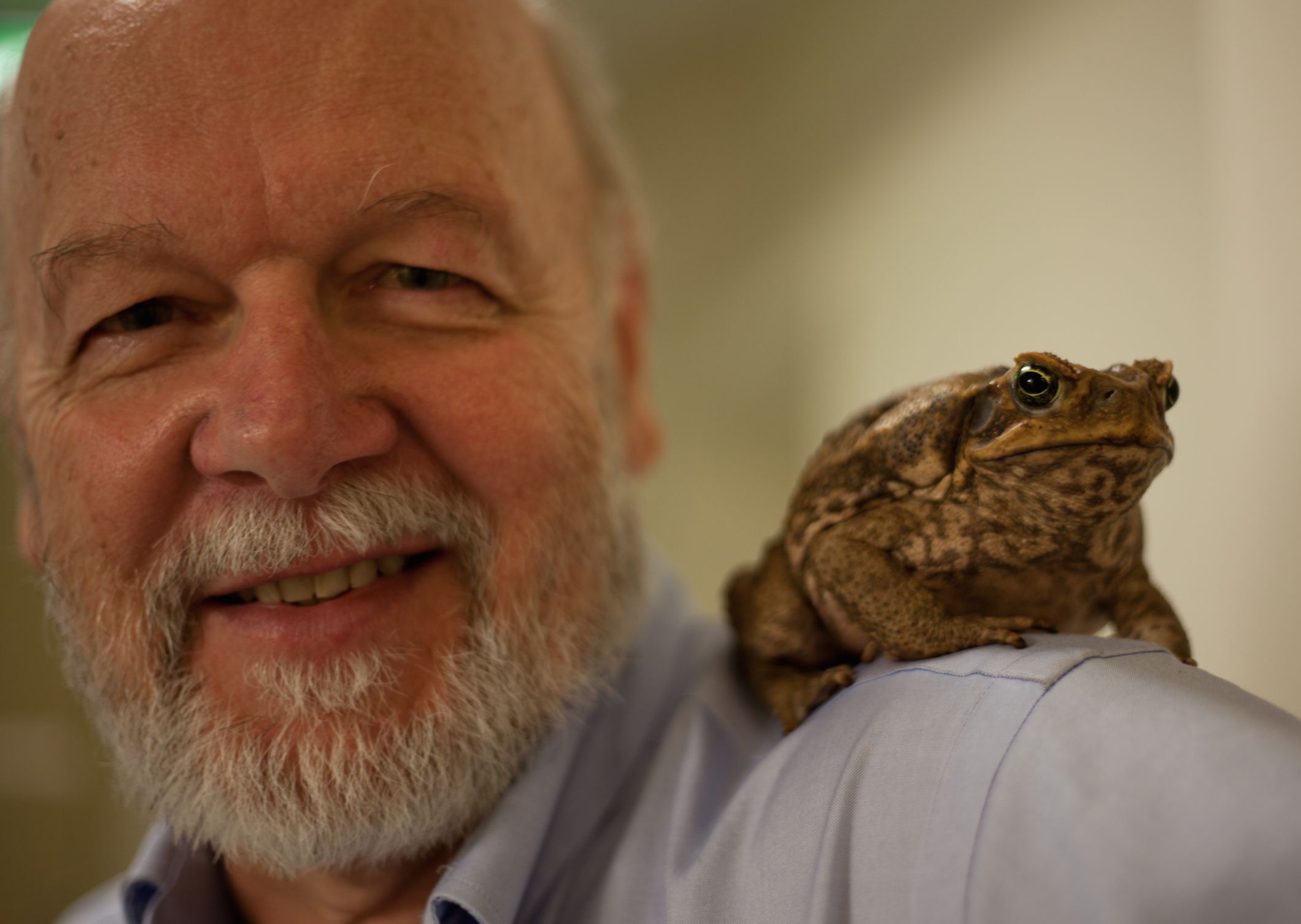
Rick in the lab with one of the cane toads that we use for television appearances. Photo by Terri Shine.
One place that became more and more important for Rick’s research was Fogg Dam, a small waterbody on the Adelaide River floodplain about 60 km east of Darwin, in the Northern Territory. Rick initially started working in the Territory in 1981, based at Jabiru in Kakadu National Park, looking at filesnakes, goannas and frillneck lizards. He soon shifted his focus to Fogg Dam, because it had terrific numbers of snakes and some friendly locals at the Coastal Plains Research Station, who helped out with advice and accommodation. Rick started ecological studies on the local pythons, and soon obtained funding from the Australian Research Council (ARC) to expand the study. He employed Thomas Madsen as a post-doctoral fellow to collaborate on his research. Tom still works on snakes and lizards at Fogg Dam but nowadays is based at Deakin University. More funding from the ARC brought Greg Brown into the system on more snake studies, and the project just kept getting bigger and bigger.
And then, cane toads appeared on our research horizons. The toad invasion front had been traveling from Queensland towards Fogg Dam for 70 years, and in 2004 it was just at our doorstep. Clearly, this was a unique opportunity for Australians to find out what cane toads actually do at the invasion front, and what effects they have.
Remarkably (given all the
public money and private effort that has been devoted to toads in Australia),
we had very little detailed information on these animals at the invasion front. But with their
impending arrival we had the chance to get that information at Fogg Dam – one
of the most intensively-studied chunks of tropical
real estate in Australia, and probably even worldwide (tropical ecosystems have
been ignored, compared to those in cooler climates closer to the main
universities in North America and northern Europe).
Funds from the Australian Research Council
(ARC), beginning in 2006, allowed a rapid
expansion of our activities, at just the right time – shortly before the toads
were due to arrive.
The Australian Research Council is a federal government agency that
supports scientific research.
This website is produced by Terri Shine, whose
main link to the strange and wonderful world of cane toads comes from being
married to Rick Shine for the last 40 or so years.
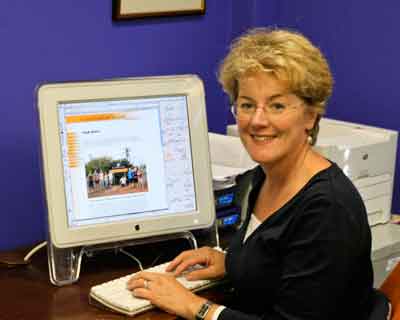
Terri Shine, longtime member of TEAM BUFO and organiser of this website.
Photo by Rick Shine.
The team has changed in composition over the years, and it’s easiest (though a bit artificial) to separate its history into two parts. The first five or six years were supported under Rick’s Federation Fellowship from the Australian Research Council (ARC). Nobody really understood very much about cane toad impacts or biology of toads in the Northern Territory, so the research was very broad. We learnt a lot, and when Rick was awarded another fellowship (again from the ARC), we took a more focused approach. The research mostly looked at rapid evolutionary changes in toads and their predators; and to place the Australian invasion into perspective, we extended our work to Hawai'i (the place from where the Aussie toads were sourced) and French Guiana, in South America (the place where the original Hawai'ian toads were sourced).
But in this part of the website, we’ll briefly review the people and highlights of the first generation of Northern Territory cane toad researchers. Some of them are still part of TEAM BUFO, and others have moved on – although in many cases we still work closely with them.
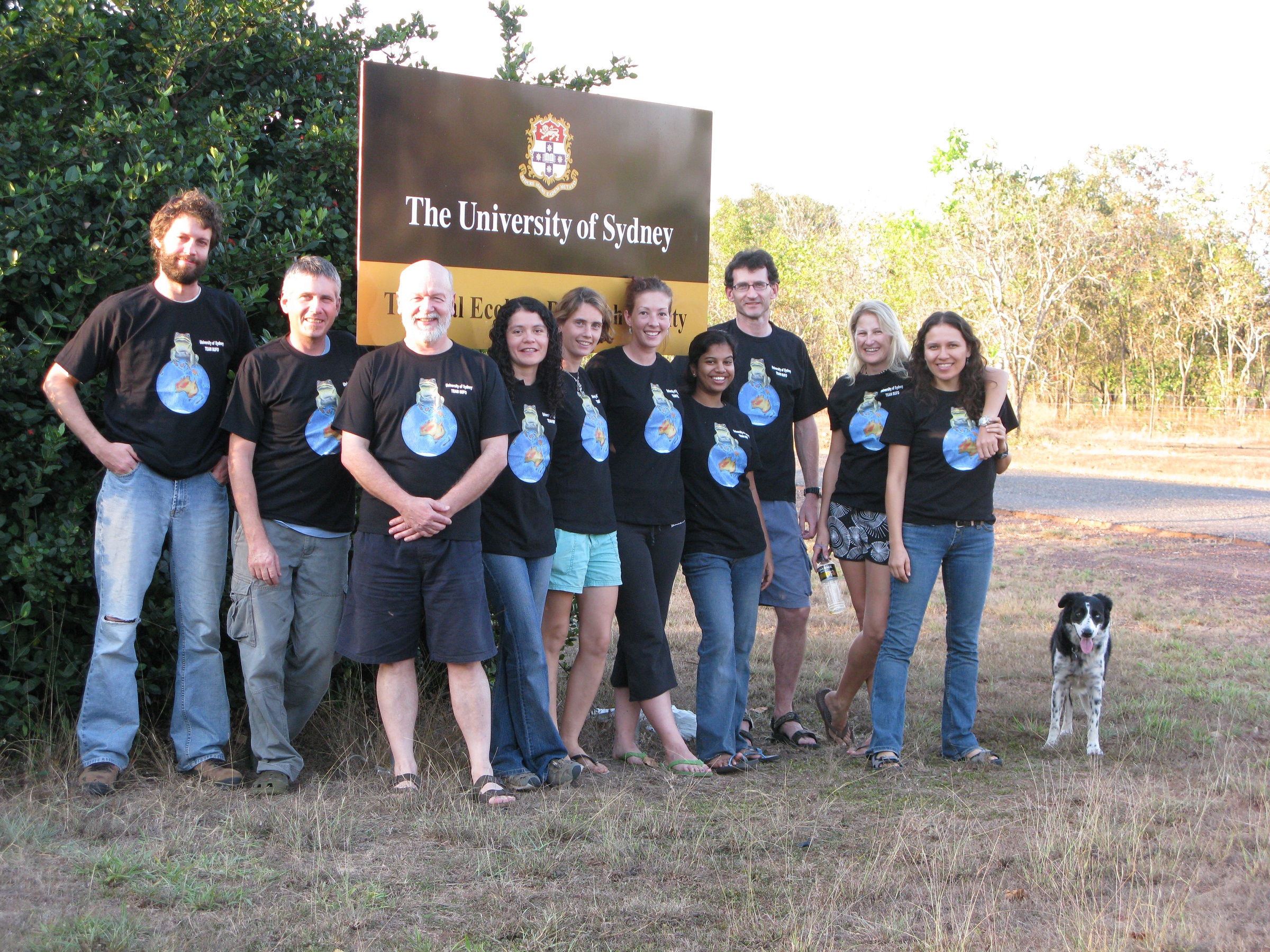
Some members of the first generation of TEAM BUFO at our field station, Middle Point, N.T. in July 2009.
Left to right: Ben Phillips, Greg Brown, Rick Shine, Elisa Cabrera-Guzman, Ligia Pizzatto, Crystal Kelehear, Nilu Somaweera, Michael Crossland, Sam Price-Rees, Edna Gonzalez-Bernal, and a friendly dog from a local farm. Photo by Elisa Cabrera-Guzman.
Dr. Greg Brown
Funding from the Australian Research Council allowed Rick to bring Dr Greg Brown from Canada to Fogg Dam to carry out research on snakes. Greg settled in, and was already an expert on the ecology of the local area before the first toads poked their heads over the horizon. Greg expanded his work to study the toads, mostly by radio-tracking. He surveyed roads in the area every evening (and still does, more than 20 years later!), so was able to capture the very first toads to arrive, and strap miniature radio-transmitters to them on waist-belts. Tens of thousands of toads later, Greg is now the acknowledged authority on field biology of invasion-front toads. He has also developed new laboratory-based methods to study the immune systems of toads.
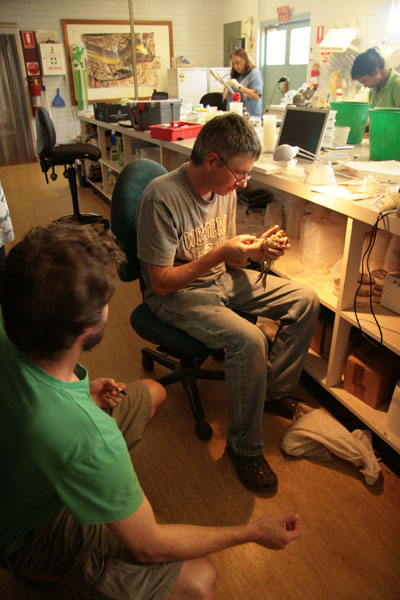
Dr. Greg Brown in the laboratory, taking a blood sample from a cane toad.
Photo by Terri Shine.
Greg has worked on many different aspects of toad biology, often in collaboration with other members of TEAM BUFO. As well as radio-tracking hundreds of toads, Greg has individually marked and recaptured many hundreds more to measure rates of growth, dispersal and survival. Greg’s information was critical to our discoveries about how and why the rate of toad invasion across Australia has accelerated so dramatically (see INVASION).
Greg has also done detailed studies on various aspects of toad
biology. For example, he and Dr Cathy Shilton conducted research on the
spinal arthritis that afflicts cane toads at the invasion front. One
of the most exciting new developments involves the immune systems of
toads. Invasion-front toads have weakened immune
responses – that may be why they are so vulnerable
to the arthritis - and we followed up this lead with studies on how
toads react to infection in terms of their behaviour and physiology, as well as looking at the processes by which they
combat infection. A better understanding of toad immune
systems may help us to pinpoint vulnerabilities, that could be used to
help control toad numbers.
Greg's current research focuses on the interaction between cane toads and their lungworm parasites.
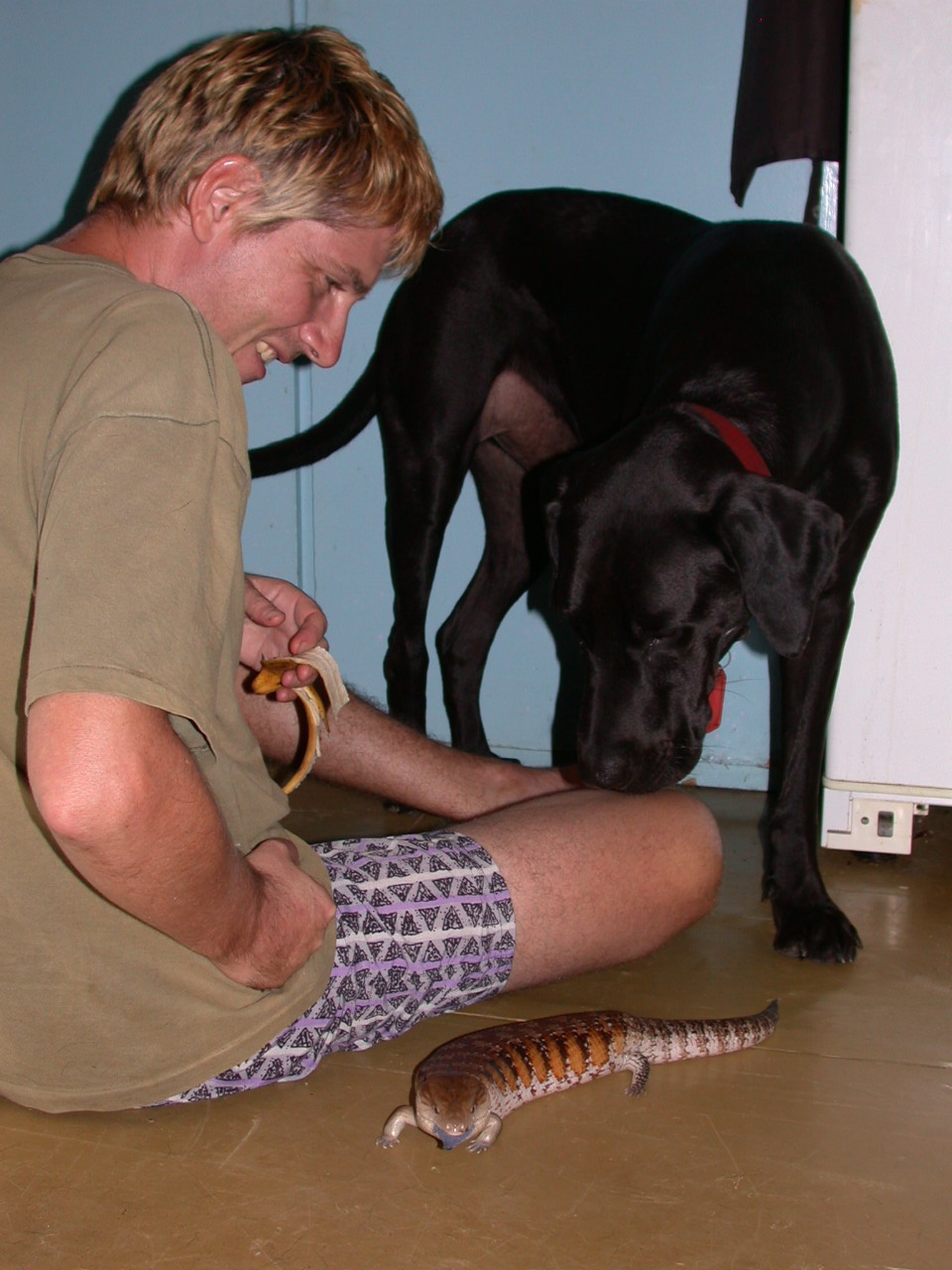
Dr. Greg Brown with two of his pets; Lucky the bluetongue lizard and Slim Dusty the dog.
Photo by Rick Shine
Ben had already done his Ph.D on adaptations of the Queensland reptile
fauna to cane toads, with Rick as supervisor, so he came to Fogg Dam to base his studies there.
Ben started out working on how local snakes deal with these invasive
amphibians, but increasingly his work shifted to look at the toads
themselves, and especially how they have been changed by the process of
invasion. Ben is a mathematical modeler as well as a field biologist, a very unusual combination. He is now based at Curtin University, and toads are not his only focus - but we are still working together.
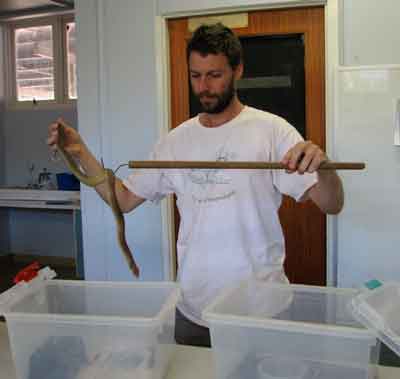
Dr. Ben Phillips with a King Brown Snake in the lab. Photo by Greg Brown.
Dr. Michael Crossland
Another longterm postdoctoral fellow in TEAM BUFO is Dr Michael Crossland. Michael actually has been studying cane toads for longer than any of the rest of us. He did his Ph D at James Cook University, supervised by toad expert Professor Ross Alford. Michael's specialty is the ecology of the aquatic stage of the toads - the eggs and tadpoles. He has conducted many experimental studies, and much of his time in recent years has been devoted to studies of chemical communication among toad tadpoles. Michael was the one who discovered that a chemical in toad eggs attracts cannibalistic toad tadpoles - and who ended up identifying the exact nature of that chemical (in collaboration with other members of TEAM BUFO, especially Professor Rob Capon from the University of Queensland).
Michael has also conducted very extensive research on other aspects of tadpole ecology.
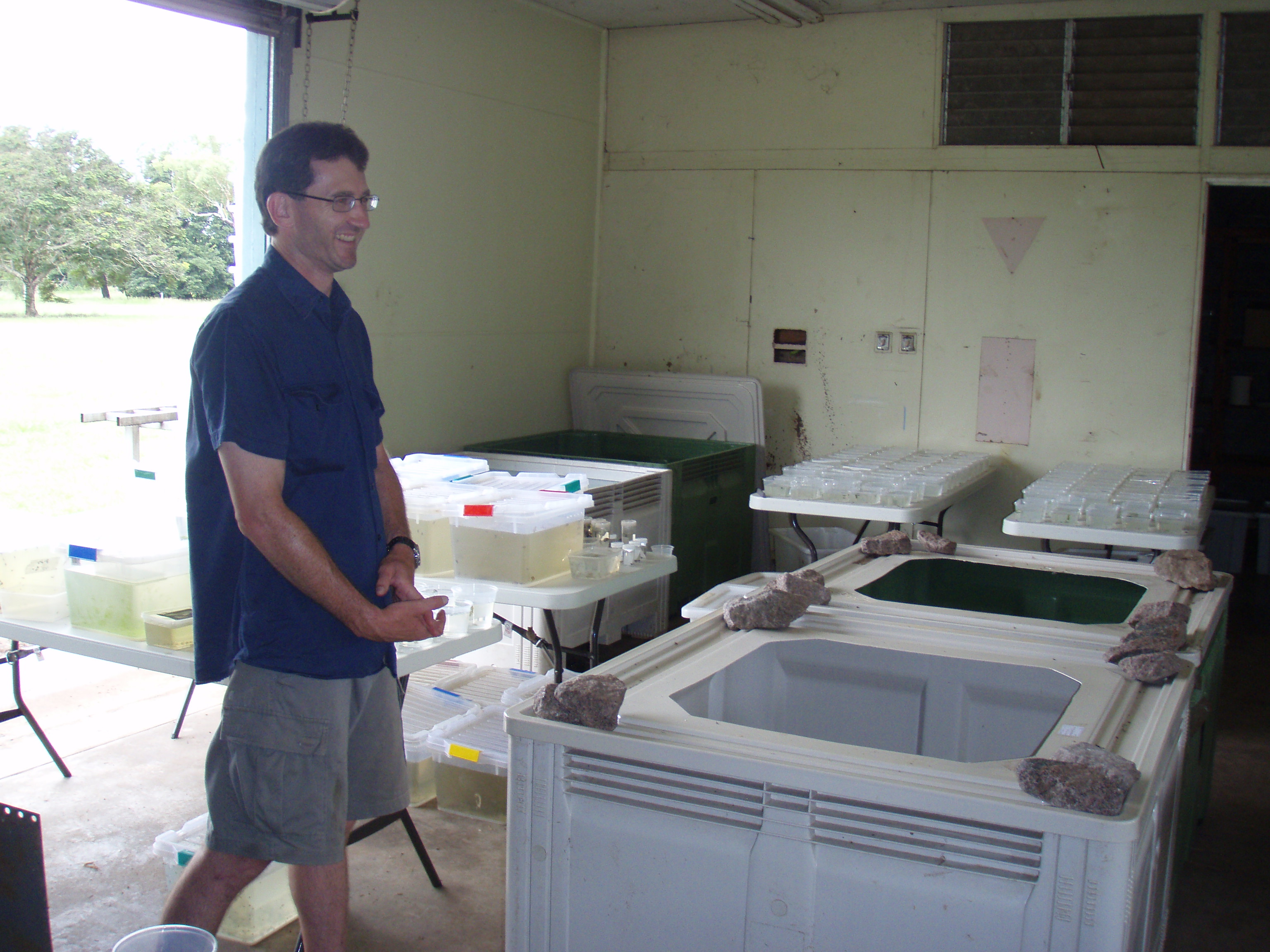
Michael Crossland in the workshop, surrounded by enclosures containing toad tadpoles. Photo by Rick Shine.
Shorter-term postdocs
Dr Gavin Bedford joined TEAM BUFO at the very beginning of our studies on cane toads, looking at how snakes and other predators respond to toads. We needed to find out what kinds of predators were in danger, and Gav cleared up a lot of the early confusion.
Like Ben and Greg, Dr. Jonno Webb evolved from a research emphasis on snakes to one that included toads also - in Jonno's case, the interaction between toads and native mammals. With further ARC support, the group expanded to include Dr Ligia Pizzatto, who came from Brazil to help us explore the effects of parasites on toads, and Dr Jason Kolbe, who came from the USA to try to work out why the toads' southern front (in New South Wales) is moving so much more slowly than the northern front. Jonno, Ligia and Jason have got other jobs, but still collaborate with us.
Takashi Haramura joined TEAM BUFO to work on tadpole ecology and control with Michael Crossland, then returned to Japan where he still continues to work (with us) on invasive cane toads.
Tom Lindstrom is a Swedish mathematician (and musician) who analysed Greg Brown's radio-tracking data, and showed how the movement patterns of cane toads shifted in the years after they first arrived at Fogg Dam. The pioneer toads were very mobile, but the later arrivals were less frenetic.
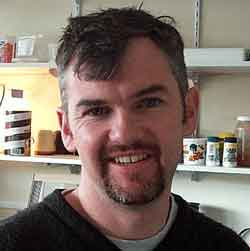
Dr. Jonno Webb. Photo by Terri Shine
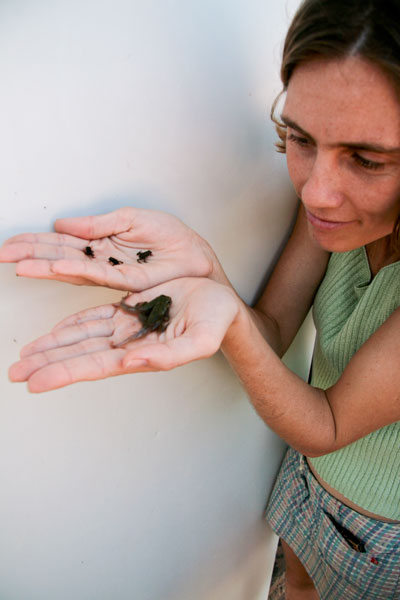
Dr. Ligia Pizzatto joined TEAM BUFO from Brazil, and conducted detailed studies on the lungworm parasites of Australian cane toads. Photo by Terri Shine.
Dr Raju Radder from India added to the international nature of Team Bufo, and also added considerably to our collective ability to play cricket. Unfortunately, that input was tragically cut short in 2008, when Raju suffered a fatal heart attack while visiting his parents in India. He was 38 years old.
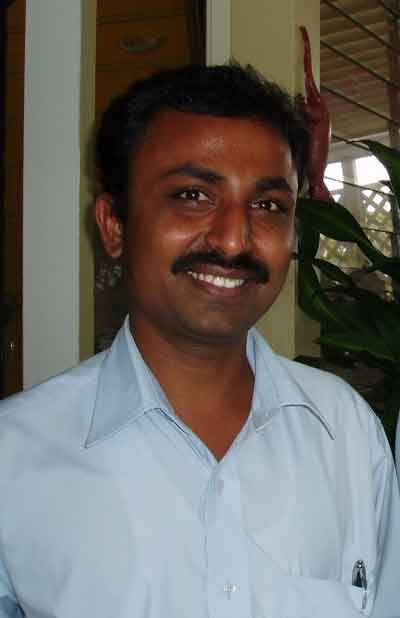
The late Dr. Raju Radder. Photo by Terri Shine.
Graduate students
The other main group in addition to the postdocs comprises the
graduate students – people that did their Ph Ds (doctorates) by
conducting research. The first group of Ph D students in Team Bufo had a wide range of
projects, including frog-toad interactions (Matt Greenlees), bird-toad
interactions (Christa Beckmann), lizard-toad interactions (Sam
Price-Rees), crocodile-toad interactions (Ruchira Somaweera), toad
pheromonal communication systems (Mattias Hagman), and the biology of
toad parasites (Crystal Kelehear). In 2009, we were joined by three
more Ph D students, to study the toad invasion process (Reid Tingley),
toad habitat use (Edna Gonzalez-Bernal) and the ecology of toad tadpoles
(Elisa Cabrera-Gusman). All of the students have now finished their Ph Ds and published lots of scientific papers on toad biology. Matt Greenlees stayed with TEAM BUFO as a postdoctoral fellow to study the invasion of cane toads in New South Wales.
On the Queensland coast, John Llewelyn did his Ph.D studies based at James Cook University (JCU, in Townsville) to work out how frog-eating predators manage to coexist with the toxic toads.
Collaborators
We also have worked collaboratively with colleagues from other universities - like Professors Ross Alford and Lin Schwarzkopf at JCU, Dave Skelly at Yale University (USA), and Mark Urban at The Center for Ecological Analysis and Synthesis in Santa Barbara (USA).
One critical collaboration that started very early in TEAM BUFO's
history, was with Dr Cathy Shilton from the Northern Territory government's
Berrimah laboratories. Cathy is a veterinary pathologist, and has been a
vital source of expertise in answering many questions that have arisen
during our studies. And she's also made major discoveries of her own,
notably the spinal arthritis in toads at the invasion front, and the
role of bacteria in that syndrome.
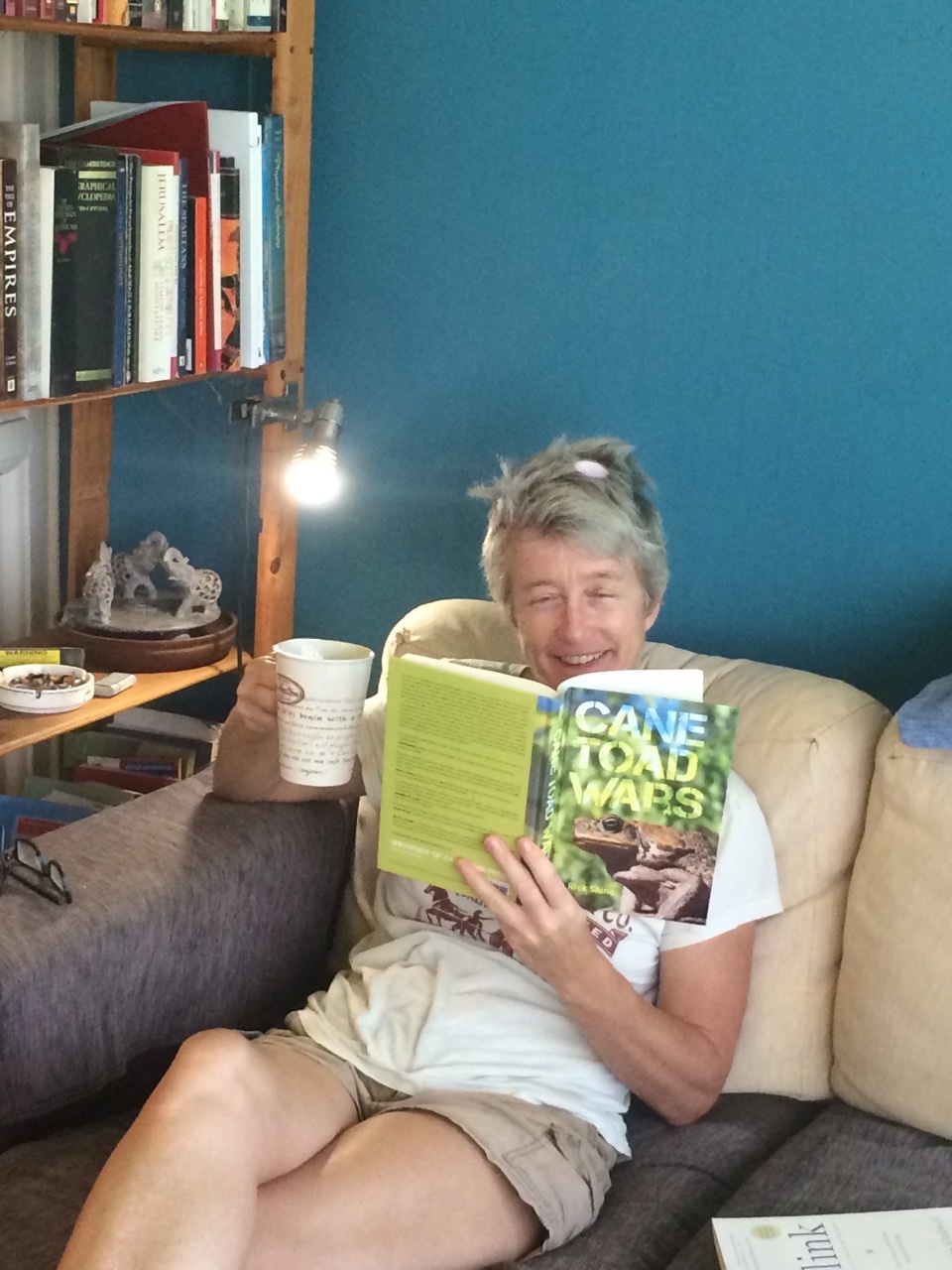
Cathy Shilton is not only a fine collaborator; she also has excellent taste in selecting her reading material! Photo by Rick Shine.
Honours students
Another important group within Team Bufo has been the Honours students –
fourth-year undergraduate researchers. Each project only lasts a year,
unlike the three years for Ph D students.
The first Honours group came up to Fogg Dam in 2006, to study sexual
interactions in toads (Haley Bowcock), the distribution of metamorph
toads (Travis Child) and the effects of lung parasites on young toads
(Crystal Kelehear). The following year, David Nelson joined us to look
at how predators learn to deal with toads, and then Georgia Ward-Fear conducted research on whether meat ants might help to reduce toad numbers.
Stephanie O’Donnell taught captive northern quolls
to avoid cane toads, and then released these marsupials to see if her
training helped the quolls to survive (it did!). And Dave
Llewelyn came to Fogg Dam to explore the idea that toads at the
invasion front have less effective immune systems than do the toads
further back in the Australian range. If that’s true (and the evidence says that it is), we might be able to find real weaknesses
in the invasion-front toads that would allow us to control their
numbers. Iris Bleach examined the effects of cane toads on the behaviour of native frogs - including their selection of shelter sites (do frogs move away if a toad moves in?) and the calling behaviour of males (do male frogs change their calls if a toad chorus starts up nearby?).
And in NSW, Sam McCann radio-tracked toads in the Border Ranges to work out just how this giant rainforest frog can function so well at low temperatures. Damian Lettoof looked at whether or not toads affect parasitism in native frogs in the same region (they do – but to our astonishment, they reduce not increase numbers of parasites in frogs). And in 2013, Chris Jolly became our third “NSW toad” Honours student, looking at the impact of toads on goannas. Greg Clarke and Felicity Nelson traveled up to Fogg Dam. Greg looked at the tadpole suppression pheromone, whereas Felicity cleared up some mysteries about the parasites in frogs and toads. In 2014, Damian Holden also headed off to the Northern Territory, to investigate the immune system functioning of cane toads.
Technical support
Throughout the entire evolution of Team Bufo, Melanie Elphick has played a central role in organising everybody, and making sure that things happen as they should. Adele Haythornthwaite and Chalene Bezzina (in Sydney) and Michelle Franklin and Nilu Somaweera and Christine LeRoux (at Fogg Dam) joined the administrative and technical side.
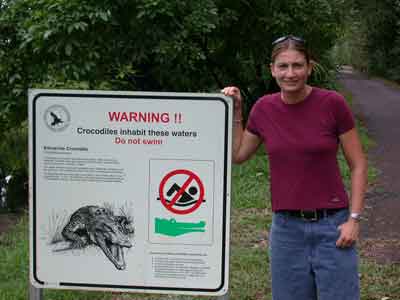
Melanie Elphick, a founding member of TEAM BUFO, and the heart and soul of our team over 25 years. Photo by Rick Shine.
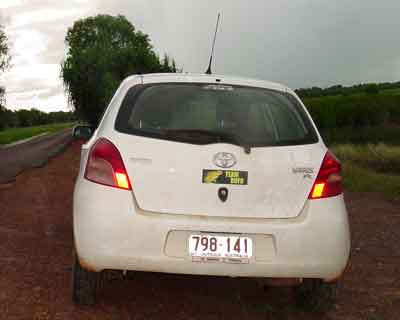
One of TEAM BUFO's field vehicles, Fogg Dam, N.T.
In a remarkably short period of time, we had created a major group, with
a wide range of techniques and expertise available – so the research
really took off.
The first generation of researchers created a
solid platform of knowledge, that set the scene for the next generation of TEAM
BUFO to build upon.
